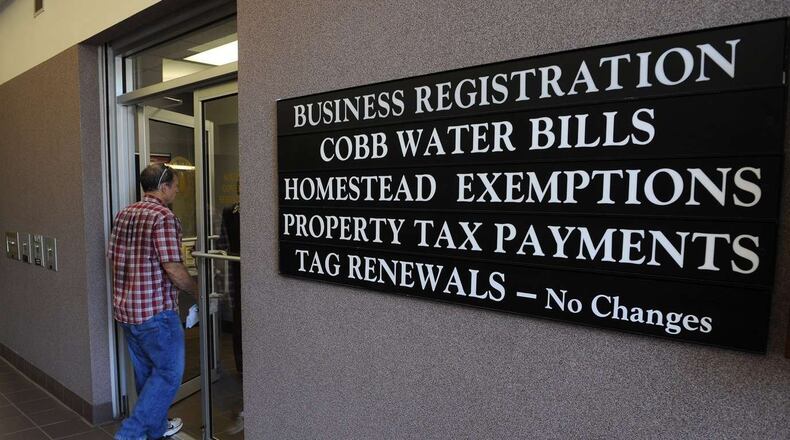A pay study. Raises. Bonuses. A $17 an-hour minimum wage. ‘Help Wanted’ signs. Job fairs.
Cobb County officials have done all of the above. They’ve spent millions of dollars — notably through their record $1.2 billion budget passed in 2022 — on efforts focused on easing the staffing shortage that plagued almost every department in the wake of the pandemic.
Nearly a year later, however, the staffing crisis has worsened.
In June 2022, more than 12% of the county’s 4,972 full-time positions were vacant. Now, that vacancy rate has jumped to almost 15%, with 794 full-time openings out of nearly 5,300 positions, according to data provided by the county.
“We’ve been able to fill entry-level positions that are tough to keep filled,” said county finance director Bill Volckmann. It has been difficult, however, to fill higher-level full-time positions, he added.
Part-time vacancies did decrease dramatically from nearly 300 last summer to just 51 this summer, which county spokesman Ross Cavitt said can mostly be accounted for in the parks department. Last year, the county implemented a $17 hourly minimum, which was up from the lowest pay at the time: $11.50 an hour.
Public safety departments are the most heavily impacted by staffing issues, and the fire, police and sheriff’s departments are facing “an extremely difficult market for those jobs,” Cavitt said.
Volckmann said it is too early to tell if the $20 million in federal American Rescue Plan Act funds to provide raises and recruitment efforts for public safety have had an impact.
Another factor at play, Cavitt said, is the number of employees retiring. While hiring has improved, it has not offset those leaving county positions.
Cobb County’s workforce problems are not unique: the public sector has not fully recovered from the massive impact the COVID-19 pandemic had on staffing and operations. But Cobb’s staffing woes long precede the start of the pandemic in 2020.
An Atlanta Journal-Constitution review last year found that other public agencies were better positioned before 2020. For example, Gwinnett’s staffing plan largely kept pace with population growth, while Cobb County’s population growth has vastly outgrown county government staff. That gap has only grown since.
In 2022, before the county implemented raises and the $17 an hour minimum wage, the county had 13% fewer workers than in 2001 when adjusting for population growth. Now, in 2023, vacancies have increased.
“The labor market remains a challenge with low unemployment and high competition for employees,” Cavitt said. “Without the board’s action last year, we would undoubtedly be in a much worse situation. Still, the wage increase brought us closer to the market rates, but again, with the competitive market, it remains a challenge.”
About the Author
Keep Reading
The Latest
Featured



